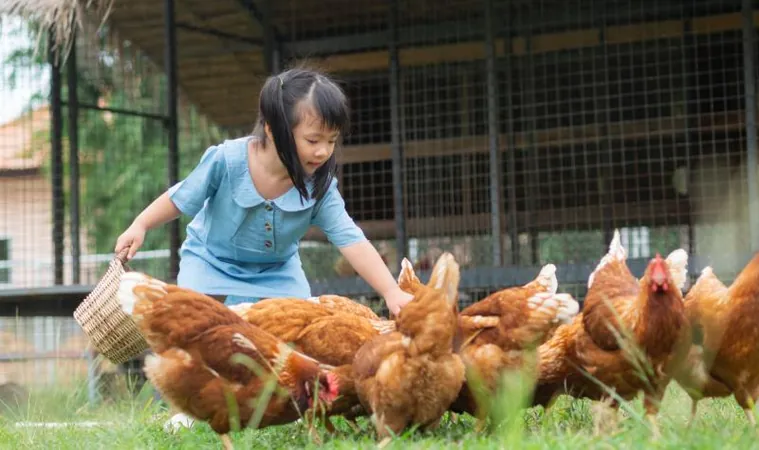
Alarming Rise of a New H5N1 Flu Strain Sparks Urgent Action in Cambodia
2024-11-06
Author: Arjun
As 2023 drew to a close, Cambodia grappled with a stark increase in human cases of the H5N1 avian flu. Scientists within the country made a groundbreaking discovery – a novel reassortant strain that merges genetic elements from an older 2.3.2.1c clade, previously circulating in Southeast Asia, with internal components from the newer and globally pervasive 2.3.4.4b clade. This particular strain has shown an alarming ability to infect various animals, and reports suggest it has even reached the frigid landscapes of Antarctica.
In a preprint study released recently, researchers from the Pasteur Institute in Cambodia provided a comprehensive genetic analysis of this newly identified H5N1 reassortant. The findings highlighted critical new details regarding the timeline of this spillover and underscored an urgent need for enhanced surveillance measures.
Concerning Mutation Alert
After nearly ten years of no reported human cases of H5N1 in Cambodia, the nation faced a shocking surge with 16 confirmed cases from February 2023 to August 2024. Investigations revealed that all affected individuals had direct contact with sick poultry or contaminated environments. Tragically, at least three patients succumbed to the infection, although no evidence of human-to-human transmission has been reported to date.
Detailed genomic analysis by the research team indicated that two distinct spillover phases occurred: the first in February 2023 linked to the older 2.3.2.1c clade, followed by a more alarming emergence in October 2023 of the novel reassortant strain, which has now supplanted the previously circulating 2.3.2.1c clade among poultry in Cambodia.
This new strain has developed several mutations, including the PB2 E627K alteration, a change associated with the adaptation of the virus to mammalian hosts and potential airborne transmission. Experts are clearly concerned about the implications of these mutations.
Critical Call for Action
The study's authors commended Cambodia's proactive One Health approach in response to the emerging cases, but called for escalated efforts to mitigate human exposure to the virus, particularly in rural areas deemed high-risk. Additionally, there is an urgent need for more intensive training programs for healthcare professionals focusing on the early detection of symptoms and effective clinical management strategies.
The research team emphasized the necessity for thorough risk assessment studies to evaluate the zoonotic threats posed by this new reassortant strain. The identification of the PB2 627K mutation in poultry raises further alarms, suggesting the potential for this strain to become widely established.
As human cases continue to rise, this situation underscores the persistent danger that avian influenza viruses pose to global health security. As attention has expanded towards the host range of the 2.3.4.4b clade, the 2.3.2.1c clade remains a significant concern in Asia, where both clades are known to coexist and circulate.
This alarming development calls for international collaboration and immediate action to prevent a potential outbreak, emphasizing the crucial need for rigorous surveillance and enhanced public health safeguards to combat this evolving health threat.



 Brasil (PT)
Brasil (PT)
 Canada (EN)
Canada (EN)
 Chile (ES)
Chile (ES)
 España (ES)
España (ES)
 France (FR)
France (FR)
 Hong Kong (EN)
Hong Kong (EN)
 Italia (IT)
Italia (IT)
 日本 (JA)
日本 (JA)
 Magyarország (HU)
Magyarország (HU)
 Norge (NO)
Norge (NO)
 Polska (PL)
Polska (PL)
 Schweiz (DE)
Schweiz (DE)
 Singapore (EN)
Singapore (EN)
 Sverige (SV)
Sverige (SV)
 Suomi (FI)
Suomi (FI)
 Türkiye (TR)
Türkiye (TR)